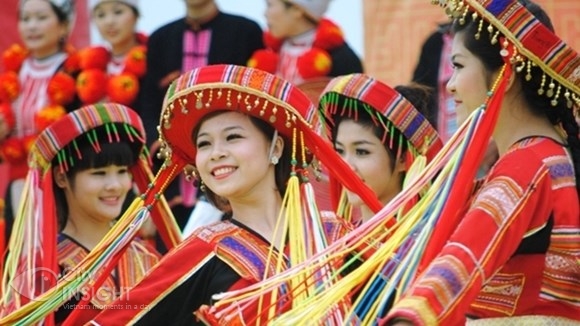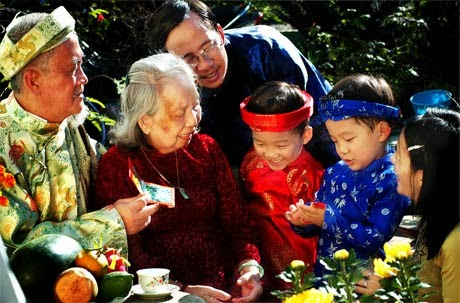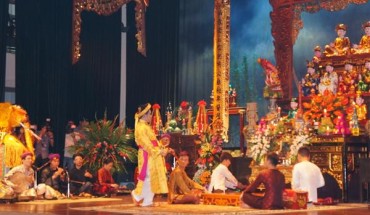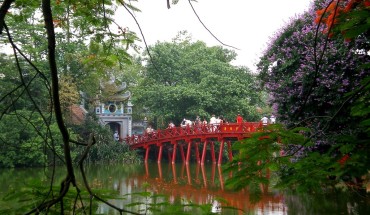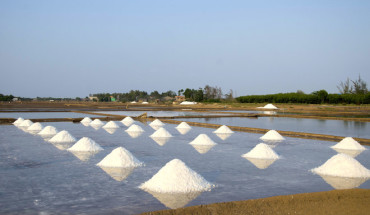Over 90% of Vietnamese people are Viet, or Kinh, people, descendants of the indigenous race, but with the many violent and migratory incursions over the centuries, as well as the southward expansion of Vietnamese territory into Cambodia, modern Vietnamese are a combination of many races and cultural influences. Chinese, Khmer (or Cambodian), Cham, and indigenous groups in the north, central mountains and coast, and far south were all one-time enemies turned allies and comprise the melting pot of modern Vietnamese.
So who are the Vietnamese? A people trying to find that out themselves, really. With the opening of their doors in the late 1980s, capitalism came trickling in and now flows like a tidal wave, and the “comrades” of old now elbow their way to becoming “consumers” and participating in the global market. The contradictions are sometimes absurd.
The dominant group, the ethnic Viet or Kinh people, inhabit the prime lowland rice- growing territories and are a very lopsided majority. Kinh people are descendants of inhabitants of the provinces of southern China.
Vietnam’s tapestry of ethnic minorities spreads across the vast tracts of the Central Highlands and the far north. Known under French governance and during the U.S. war years as Montagnards, ethnic hill tribe people and their myriad subgroups in Vietnam divide the mountainous areas of the country into a colorful patchwork of disparate languages, cultures, and traditions. A visit to the regions in the far north or Central Highlands, best when accompanied by a guide who can make introductions, is a unique glimpse of the diversity and fortitude of these resilient groups who have been immigrating from China and nearby Laos for hundreds of years. Ethnic Khmer, or Cambodian people, live in large communities in the south, mostly along the Cambodian border and on the Mekong Delta. Ethnic Cham people, the Muslim descendants of the 15th-century Champa Kingdom that once ruled the far south, live mostly in isolated fishing com-munities in the coastal south.
A few million ethnic Chinese make up a strong merchant class centered in the major cities. Ho Chi Minh City has a teeming and prosperous Chinatown, and Chinese merchants have lived for generations and plied the same trades for hundreds of years in Hanoi’s Old Quarter. As one-time conquerors and colonists, and contemporary enemies, ethnic Chinese have been persecuted since the expulsion of American forces and reunification of Vietnam in 1975. Many Chinese in Vietnam fled, joining the deluge of Vietnamese “boat people” escaping persecution.
Today ethnic tensions in Vietnam are limited to the majority government, with its fear of and disputes with ethnic minority people in the Central Highlands and the far north. Only recently, a contingent of refugees fleeing persecution in Laos Vietnam’s cousin in paranoia about hill- tribe insurgency found refuge in the Central Highlands, only to suffer suspicion, searches, and bullying from the Vietnamese. Still smiting from hill tribe group complicity with French and U.S. forces during the Vietnam War, the government is wary of these stubborn, autonomous people, placing them into controlled village units of “enforced primitivism.”
Vietnamese family units are tight. Generations live together and practice the same trade, usually rural farming, but merchants and shopkeepers also work together generation after generation. Population density is high because wherever there are no mountains, the land is either developed or cultivated; flat, arable ground is at a premium. Collectivization and cooperation in villages have always been the norm some argue that some form of socialism was inherent in the Vietnamese makeup. Vietnam nearly collapsed in abject poverty under Communism, but with its return to the market economy, village units have formed again and rural life has improved. Although material wealth eludes most (many Vietnamese still live in abject poverty), the standard of living is on the rise. Though the country is in a mad dash of modernization, the economy has remained largely agrarian, with farmers, fishermen, and forestry workers accounting for three-quarters of the work- force in a mostly rural demographic. The Vietnamese have a strong sense of family and of community, and are accustomed to close human contact and far-reaching relationships around large patriarchal family groups.
The French categorized the country into three distinct regions Cochin China in the south, Annam in the center, and Tonkin in the north and it’s important to note that Vietnam was unified under one name only after the departure of Japanese and French troops at the end of World War II. It took years of fighting first with the French, then with the Americans before the nation was united, and even today Vietnamese from the north and the south are quite distinct.
Traditional village life once centered on the dinh, or small shrine honored as the god of the village or the mountains, now a Confucian altar to the generations that came before. Young Vietnamese are increasingly seeking higher-paying jobs in cities, but most return home or support their extended families from afar.
Hospitality is very important to Vietnamese, and travelers often find themselves as guests in local homes and offered the choicest pieces of a humble repast, or sharing rice whiskey and laughter. Vietnamese are very kind and playful. Children are doted upon. Families are close and supportive, and adopt new members all the time (you’ll be taken in, too). Accept invites whenever possible.
It’s easy to know a lot about Vietnam and Vietnamese culture, but much harder to really understand, say many longtime expats. Learning about the concept of “saving face,” for example, often takes some painful lessons in “losing face,” but a trip to Vietnam is a great way to get perspective on our own cultural programming.


